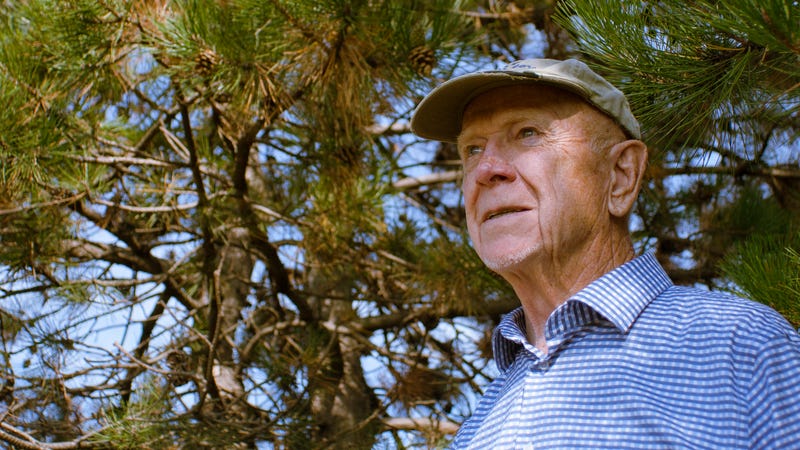
These days it’s not at all uncommon to open up a car magazine or visit a car website and find a photo of some half-covered prototype long before a car company wanted you to see the thing. For that, you can thank Jim Dunne, the guy who might as well have invented the business of spy photography in the automotive world. He died yesterday at 87, according to news reports.
Leo James Dunne died of cancer, as a local obituary notes. He had been in good health earlier this year, as fellow spy photographer Brenda Priddy told Automotive News.
Dunne was known for pioneering the job of selling photos of as-yet-unseen cars to magazines, starting in the mid-1960s and with Popular Mechanics. He served for three years in army during the Korean War, as AN reports, as a reconnaissance specialist. (It’s entirely possible those skills served him well in his chosen career later, I might add.) After that he attended the University of Detroit and entered journalism upon graduating.
For the next several decades, he’d come up with new, pioneering ways to catch cars in the wild, and then he’d sell his work to publications like Automotive News and Autoweek.
Advertisement

I remember the first time I met him. I was setting up a shoot for a short documentary on him and his protege, Brian Williams, one of the handful of professional car spy photographers working worldwide. Brian is still in the game (and works with Jalopnik frequently). Dunne was long since retired. I expected that we would hang out in his house, look through old photo albums and magazines, talk about the good old days. Quiet things.
Advertisement
Nope! Dunne called me, loud on the phone, talking fast, urgent. He needed me to be in a parking lot in Dearborn now. He had just seen some Lincoln prototypes and we were losing time to catch them. WHERE ARE YOU?, he said.
My shooter Mike Roselli and I ended up in a full day of madcap driving around the greater Detroit area, hitting every secret spot that he had long used to peek into private testing grounds. GM named a hill after him, looking down over the fence at the straightaway on the Milford Proving Grounds. He told us not to stay parked for too long. Security still watched for him.
Advertisement
What I liked about Jim was he never went for the blunt instrument approach. Other spy photographers beat him to scoops by hiring helicopters to fly over a car company’s property.
Jim was more far cunning, as Automotive News recalled in its obit, retelling a story that he also told me with pride. (Mostly the part about flipping the property for a profit.) From AN:
His most brazen move was to buy land that abutted what was then Chrysler’s proving grounds in the Arizona desert. It was quite a while before Chrysler realized what was going on and put up a big fence. By that time Dunne had more than paid for the cost of the land and even, legend has it, sold it for a tidy profit to Chrysler. (That was the legend; the truth was it went to a land developer, but Dunne still made a heck of a profit on it.)
Advertisement
I will excerpt a few lines from Dunne’s autobiography, Car Spy, which arrived in the mail one day from Jim. He opens the book with a story from the early ’70s of him and Jerry Flint of the New York Times going straight into the Chrysler Jefferson plant located in the middle of the Detroit metro area, disguising themselves in “factory manager standard: short-sleeved white shirts, narrow dark ties, dress pants and jackets, and a ‘don’t bother my, I’m on important business’ attitude” along with clipboards and pocket protectors. The two strode past the receptionist, Dunne with the body of a Nikon camera in his pocket, Flint with the lens, to be assembled once they found a prototype worth shooting in some high-security area. The car they found ended up not worth shooting, a discovery they made just as some suits approached asking who they were.
Under orders from Popular Science to “never tell a lie,” Dunne explained that they were from “publications” and quickly strode away after the actual Chrysler employees warned them that spy photographers (namely, Dunne and Flint) had been in the plant before.
Advertisement
Dunne prefaced the story with a sweet note of how things were:
What separates true car spies from ordinary pass-by shooters are escapades that take the spy to the inner sanctums of the automakers. Anyone can stand by the side of the road, paparazzi-style, and take photos of prototypes. That’s a turkey shoot. But no one else, to my knowledge, has duplicated what my man Flint an I accomplished in the car-spying field.
Advertisement
Dunne recounts the story with a lot of bravado, but he prefaces it with reflection, the kind that you’d see whenever he would look you in the eye:
If this sounds like arrogance, I’m sending the wrong message. In the days leading up to any incursion, I worried. A lot. Middle-of-the-night-wake-up kinds of worries. During-the-day worries. Weekend worries. Sweaty palms worries. Preparation worries. Still, the lure of the hunt was strong. And I couldn’t resist.
Advertisement
Dunne is survived by seven children. Automobile notes in its obit that he said he put them through college with his photography.















